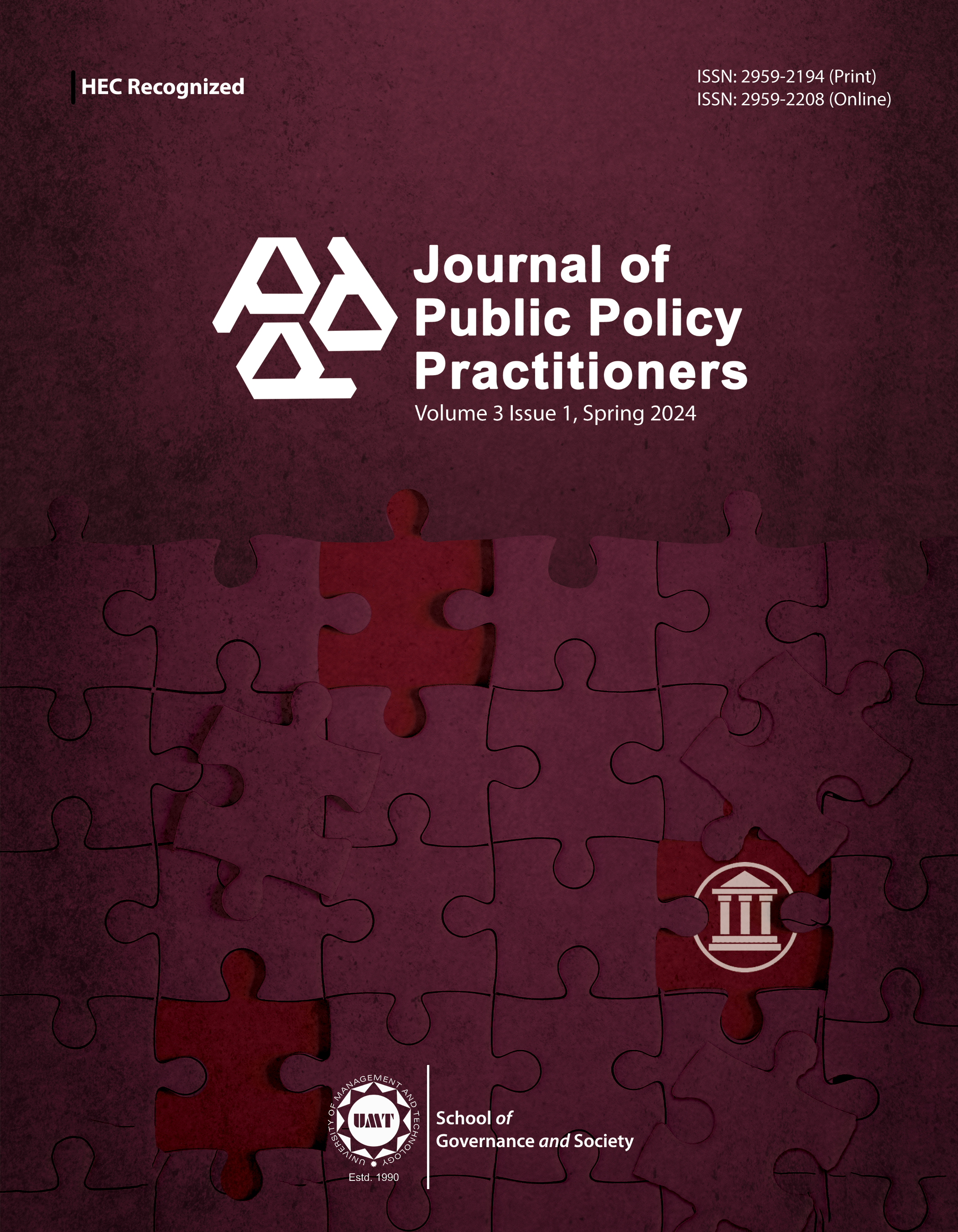Strategic Communication in Pakistan: Synergizing a Policy Framework for National Security
Abstract
 Abstract Views: 0
Abstract Views: 0
Cyclic communications, engagements, feedbacks, and rectifications ensure the accomplishment of a policy. Power projection in International Relations (IR) has transformed to include soft and smart dimensions which eventually bring evolution in public relations and public diplomacy. Strategic communication is the tool of soft power engaging targeted audience in circular communication along with incorporating implementation. Pakistan’s National Security Policy (NSP) (2022-2026) is the first in its history at a critical juncture of global, regional, and national political landscape. Therefore, many geopolitical and geo-economic fault lines cross through what lies at Pakistan’s core national interests. A comprehensive strategic communication framework introduced in the current study aimed to overhaul the crises of narrative building, adequate communication, and continuous engagement.
Downloads
References
Ali, A., & Patman, R. G. (2019). The evolution of the national Security State in Pakistan: 1947–1989. Democracy and Security, 15(4), 301–327. https://doi.org/10.1080/17419166.2019.1566063
Aoi, C. (2017). Japanese strategic communication: its significance as a political tool. Defence Strategic Communications, 3, 71–101.
Aristotle. (1991). The art of rhetoric. Penguin Books.
Baldwin, D. A. (2018). The concept of security. In M. Shehaan (Ed.), National and international security (pp. 41–62). Routledge.
Bolt, Neville. (2018). Foreword. Defense Strategic Communication, 3–11.
Bolt, N. (2019). Foreword. Defence Strategic Communications, 6, 3–11.
Brown, L. R. (1986). Redefining national security. Challenge, 29(3), 25–32.
Burchill, S., Linklater, A., Devetak, R., Donnelly, J., & Nardin, T. (2009). Theories of international relations. Palgrave Macmillan.
Buzan, B. (1983). People, states, and fear: The national security problem in international relations. University of North Carolina Press.
Cornish, P., Lindley-French, J., & Yorke, C. (2011). Strategic communication and national security. Chatham House.
Farwell, J. P. (2012). Persuasion and power: The art of strategic communication. Georgetown University Press.
Gordon, R., & Loge, P. (2015). Strategic communication: A political and operational prerequisite for successful peace operations. https://www.challengesforum.org/wp-content/uploads/2019/06/Strategic-Communication_Gordon-and-Loge.pdf
Government of Pakistan. (2022). National security policy of Pakistan, 2022-2026. https://nsd.gov.pk/SiteImage/Misc/files/NSP%20summary.pdf
Joints Chiefs of Staff. (2019). United States Government compendium of interagency and associated terms. https://www.jcs.mil/Portals/36/Documents/Doctrine/dictionary/repository/usg_compendium.pdf
Lyotard, J. F. (2010). “Answering the question: What is postmodernism? (1979). In I. Szeman, & T. Kaposy (Eds.), Cultural Theory: An Anthology (pp. 357–363). Wiley Blackwell.
Kahraman, A. D. (2015). Relationship of modernism, postmodernism and reflections of it on education. Procedia-Social and Behavioral Sciences, 174, 3991–3996. https://doi.org/10.1016/j.sbspro.2015.01.1146
Kallenberg, B. J., & Smith, E. (2008). Modernism and Postmodernism. In William A. Dyrness, Veli-Matti Kärkkäinen (Eds.), The global dictionary of theology: A resource for the worldwide church (pp. 568–574). IVP Academics.
Kiran, A. (2016). Strategic communication in 21st Century: Understanding new evolving concept and its relevance for Pakistan. Pakistan Research Database. https://www.prdb.pk/article/strategic-communication-in-21st-century-understanding-new-e-8222
Ministry of Defense. (2019). Joint doctrine notes 2/19: Defense strategic communication approach to formulating and executing strategy. https://assets.publishing.service.gov.uk/media/667d693c97ea0c79abfe4d25/20190411-Archive_JDN_2_19_StratCom_web.pdf
Nye, J. S. (2021). Soft power: The evolution of a concept. Journal of Political Power, 14(1), 196–208. https://doi.org/10.1080/2158379X.2021.1879572
Paul, C. (2011). Strategic communication: Origins, concepts, and current debates. Bloomsbury Publishing.
Plowman, K. D., & Wakefield, R. I. (2013). Strategic communication in conflict resolution: Contributions to institutionalization in public relations. In K. Sriramesh, A. Zerfass, & J. Kim. (Eds.), Public relations and communication management: Current trends and emerging topics (pp. 163–177). Routledge.
Sarkesian, S. C., Williams, J. A., & Cimbala, S. J. (2008). US national security: Policymakers, processes, and politics. Lynne Rienner Publishers.
The Pakistan Code. (2004). National Security Council Act, 2004. https://pakistancode.gov.pk/english/UY2FqaJw1-apaUY2Fqa-apaUY2Fsb5k%3D-sg-jjjjjjjjjjjjj
The White House. (2010). National framework of strategic communication. https://man.fas.org/eprint/pubdip.pdf
Ullman, R. H. (1983). Redefining security. International Security, 8(1), 129–153. https://doi.org/10.2307/2538489
Waever, O. (1995). Securitization and desecuritization. In R. Lipschutz (Ed.), On security (pp. 46–86). Columbia University Press.
Wolfers, A. (1952). "National security" as an ambiguous symbol. Political Science Quarterly, 67(4), 481–502. https://doi.org/10.2307/2145138
Yousef, T. (2017). Modernism, postmodernism, and metamodernism: A critique. International Journal of Language and Literature, 5(1), 33–43. https://doi.org/10.15640/ijll.v5n1a5
Copyright (c) 2024 Zainab Ahmed

This work is licensed under a Creative Commons Attribution 4.0 International License.







